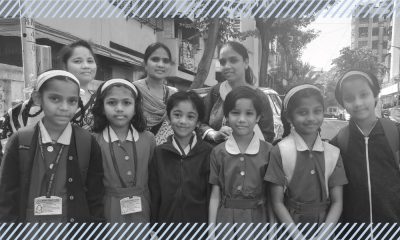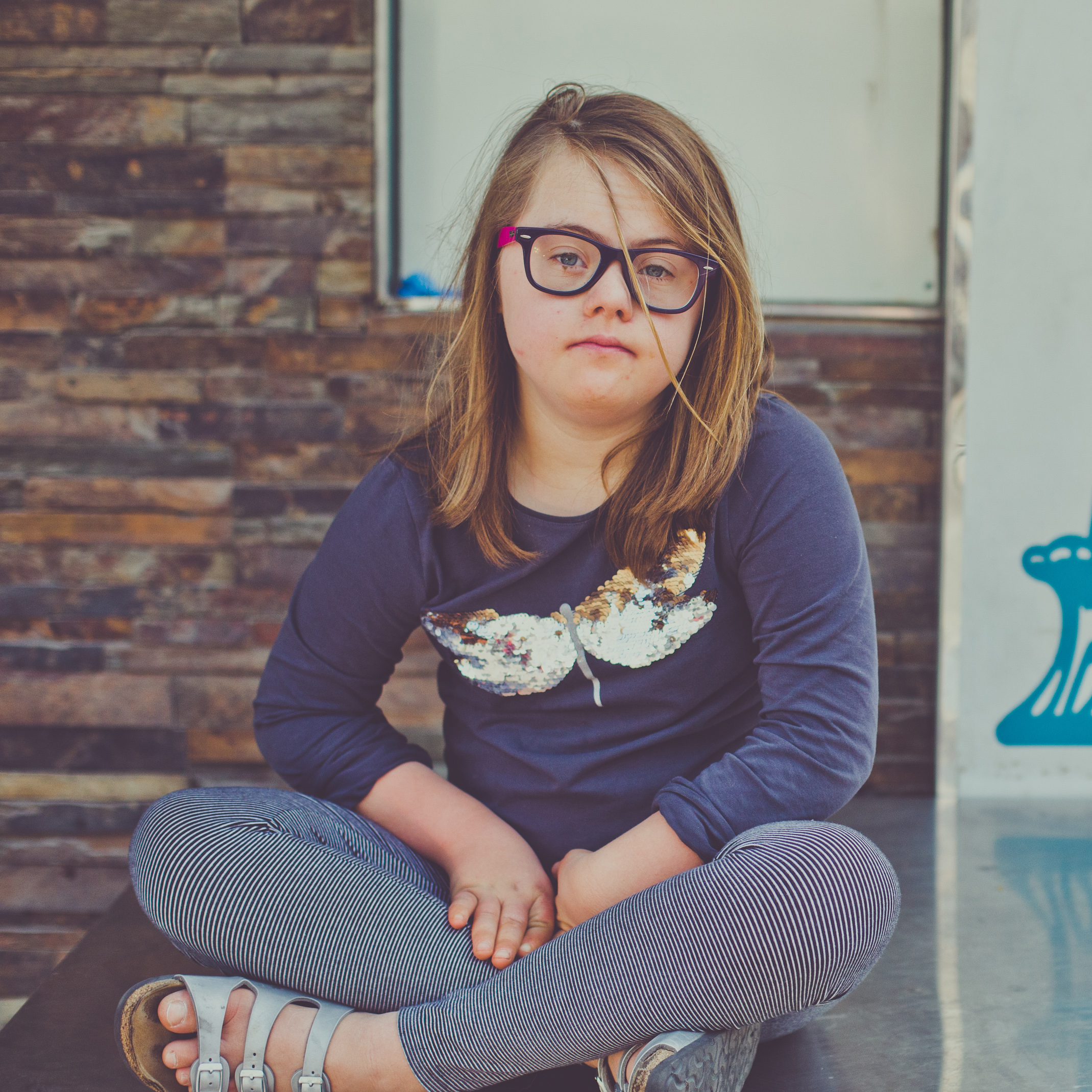Mental Health
The Kids Are Not OK: Indian Institutions Aren’t Doing Enough to Prevent Suicide
Suicide is reportedly the leading cause of death among the Indian youth.
Annie Kuriakose is a 28-year-old English lecturer at Mount Carmel College, Bengaluru, a metropolitan city in South India. Recently through an Instagram post, she shared her experience of surviving the effects of a student’s suicide. The incident, which took place in April this year, sent a ripple of shock and grief throughout the campus.
“Since the incident happened during the exam time, the college couldn’t do much for the students as they didn’t want to disturb the schedule of the exams. Although, the institution, lecturers and students gave immense support to the family of the deceased student, and checked on them quite regularly. [This incident] made us even more sensitive to the needs of other students as well,” Kuriakose told Re:Set.


A suicide on campus has helped Kuriakose be more sensitive towards student needs. Photo courtesy: Vikas Badiger / Faces of Bengaluru
In its aftermath, the institution took increased measures to discuss mental health on campus. “In recent times, we have a new psychology association which has implemented awareness drives,” Harshita Chhatlani, a 20-year-old student at the college, said in a conversation with Re:Set.
Kuriakose elaborated on the steps and facilities in place at the college. “There is an enrichment program at the beginning of each academic year to sensitize the faculty. A psychologist has been engaged by the institution to help the staff become aware of students’ difficulties and mental health among other issues,” she said. “A common platform called MCC Voice also allows students and faculty to come together and discuss mental health issues.”
“I feel we should do more.”
However, many college campuses across urban India seem to be struggling to address student suicide and introduce prevention measures. Re:Set spoke to a 25-year-old alumni of Xaviers’ University, Bhubaneswar, one of the largest cities in East India. “We had a section in the admission form where we had to indicate our history of mental illness,” the woman told us on the condition of anonymity. “Even though I disclosed my issues, it was not addressed later — neither during my interview nor during orientation.”
As recently as last month, there were reports of a suicide, the third one this year at the renowned Indian Institute of Technology’s Hyderabad campus. A student from the college spoke to Re:Set on the condition of anonymity: “[The students] had a town hall meeting with the director after the third suicide, where people were asked to give their opinions about the cause and suggestions [on how to address it]. I am not happy [about] the whole suicide [episode]…nobody is. I feel we should do more. But generally speaking, mental health information and awareness is so scant that it’s hard to figure out what to do. And even getting students to take some of this seriously is a challenge.”
Sunshine, the on-campus counseling cell, is run with the support of student volunteers and faculty representatives from each of the university’s departments. They conduct mental health awareness walks and coordinate for off-campus facilitators to deliver seminars on the topic. Re:Set reached out to them to know how they are handling the aftermath of the incidents and raising awareness about suicide prevention. They directed us to speak to the university’s public information officer. At the time of publication, we have not received an official response from the institution.
“Trauma can make people block their ability to converse about it.”
“Trauma [such as the news of the suicide of a peer] can make people block their ability to converse about it. The impact [of the news] will be at large and more to people associated with the victim in closer proximity,” Dr. Girija Mahale, a psychiatrist who heads the emotional well-being centre at a private university in the city of Pune, told Re:Set. “The likelihood of this spreading and creating an unhealthy atmosphere is quite large.”
Dr. Vijaya Raghavan, a psychiatrist at the Schizophrenia Research Foundation (SCARF), a mental health rehabilitation centre in the southern city of Chennai, elaborated on what school administrators can do if a student dies of suicide. “In the aftermath, [the authorities should announce]: ‘We have a safe space or a [helpline] number or a mental health provider in case anybody wants to talk. It should not be forced upon anyone as it can be counter-productive.”
Existing mental health infrastructure on Indian campuses
On a national scale, the Indian government has taken some preliminary steps to prevent suicide and raise awareness about mental health. A landmark move came in the form of the Mental Health Care Act, which was passed by the Upper House of the Indian Parliament in 2016. Among other things, the act decriminalizes the attempt to take one’s own life, making it safer for people to approach and access help. However, educational campuses seem to be unaware of the twin issues of mental health and suicide among the younger demographic of India. Suicide has been reported to be the leading cause of death among those between the ages of 15 and 29 years. This demographic group regularly attends and interacts with educational institutions for schooling, skill development and other training needs. However, many of the institutions are yet to formulate policies and procedures to address this public health crisis systematically.
Also read: An Open Letter on Mental Health From a High School Student
“We have on-campus counselors and invite visiting faculties to carry out awareness campaigns and intervention methods. [However], there is no policy regarding suicide prevention as such,” Mahale told Re:Set. “There is research indicating that a structured policy will be efficient in helping all stakeholders cope with an incident like suicide. When an incident is anticipated or occurs, the health centre of campus is alerted.” She added that they focus on alerting stakeholders like parents, the director and other staff members coupled with the local police force. While there is no policy yet on what needs to be down to bring down the numbers, the university is trying to implement measures in a structural manner. “[This] is imperative and in our pipeline,” Mahale added.
We found during our reporting that many schools and colleges still seem uncomfortable talking openly about suicide.
Richa Singh, co-founder and CEO of YourDost, an online emotional wellness platform, elaborated on why schools respond this way. “There is a gap and it starts with the perception of emotional well-being,” she said. “A lot of institutions simply say that their students are not stressed…sometimes they say that stress is not even real! They think it’s the responsibility of the parents.”
Chhatlani added to this by recounting her mental health experience in school: “When I had attempted self-harm [in school], I was told that I was giving excuses for my academic performance. It was my school counselor who helped me reach a diagnosis, and kept it confidential from all authorities, including my parents.”


Chhatlani’s school counsellor supported her privacy and helped her reach a diagnosis. Photo courtesy: Harshita Chhatlani
To understand this better, Re:Set reached out to leading schools in the city of Chennai. The school administrators expressed their strong reservations about talking with the media on this issue, and were worried that it might put the school’s reputation at risk. They redirected us to the guidelines prescribed by the country’s Central Board of Secondary Education. These guidelines recommend appointing a full-time counselor on campus, and conducting workshops on life lessons such as resisting peer pressure and building communication skills to promote positive mental health, and raising awareness about stress management and cyber safety among students.
One of the counselors from a school spoke to us on the condition of anonymity. “Most schools do not have any specific policies for suicide prevention. However, there are general guidelines and staff training on how to identify and speak to children with regard to mental health,” she said. “Words like suicide or depression are not explicitly used by staff or the counselor, as they feel that the word suicide may instill a sense of fear in children.”
Organizations changing the landscape
Raghavan acknowledges the taboo around suicide and mental health in the country. “Talking about suicide will not lead to or encourage suicide — this is a common myth, and as a team of mental health providers, we want to bust it as it is absolutely false,” he told Re:Set.


SCARF is one of the organizations at the forefront of raising awareness about youth suicide in India. (c) Reset Fest Inc, Canada.
Vimla Paul, a social worker with SCARF, added that she hasn’t encountered any schools and colleges in the city that have suicide prevention policies in place yet.
SCARF regularly conducts mental health awareness workshops in schools and colleges across the city. However, the organization often faces resistance from school staff when addressing suicide with the school community. Recently, after a suicide at a public school, SCARF put up helpline numbers on the campus notice board. Some staff members explicitly disapproved of this move, one SCARF volunteer told us.
Talking about suicide will not lead to or encourage suicide — this is a common myth.
The helpline numbers were those operated by Sneha Foundation, another initiative based in Chennai. The foundation runs distress helplines with the support of trained volunteers, which can be accessed from various parts of the country, including rural areas. Its founder, Dr. Lakshmi Vijayakumar, is a leading suicidologist and member of the World Health Organization’s (WHO) network on suicide research and prevention. She is playing an instrumental role in formulating a national suicide prevention policy. The papers were recently submitted to the health ministry, and it is expected to have an emphasis on the youth population.
In Bengaluru, an alternative school focused on holistic learning, encourages discussions around student well-being and mental health. Mira Ranjan (name changed), who left a career in the financial services industry to become a teacher after pursuing a course in holistic education, spoke to Re:Set about how the staff at her school were actively involved in the children’s mental well-being. They regularly organize trust circles and other forms of safe spaces for students of all ages to openly discuss topics without the fear of judgement. “Depending upon the severity of the issue, we involve the coordinator, who takes the call to involve parents and counselors, or address it ourselves. We have stuck child helpline numbers in all classrooms and sensitize children about them through a session. However, nothing specifically on suicide prevention just yet.”


Young scouts at SCARF disseminate awareness on mental health literacy among youngsters. (c) Reset Fest Inc, Canada.
According to Raghavan, the absence of suicide prevention policies in education institutions can be attributed to a lack of awareness and the public stigma that surrounds it.
“[Suicide and mental health] are a hush-hush topic. It’s a reactive activity in the institution, and not proactive,” he reflected. “Many a time, parents are in denial when we address their child’s mental health challenges. They just do not want to address the elephant in the room. On the other hand, students are definitely more accepting.”
The role of families
In our conversation, Ranjan mentioned that domestic issues and changes to living arrangements such as divorces and deaths in the family often affect a child’s mental health. Sushma Ramachandran, a psychotherapist from Chennai, who works extensively with young people, agrees: “Parental pressure is one of the many factors that affect young people. They also face issues regarding relationships, body image, as well as academic and peer pressure. When left unaddressed, these issues complicate with progression in age.”
“Creating awareness is most important for me as a parent.”
Indu Jayaram, a parent and career counselor from Kochi, a coastal city in South India, has chosen to educate her daughter through the open schooling system. She finds the emotional support system in mainstream schools to be inadequate, and believes that through this format, her daughter can reach out to her for support instead. “I don’t have a problem in discussing openly about mental health or with using the word, ‘suicide.’ Creating awareness is most important for me as a parent.”
Dr. Sudha Mahesh, a parent and ENT surgeon from Chennai, is also proactive about engaging with her children on these matters. “I discuss mental health issues with my children. They are aware of child helplines, although not of suicide helplines yet,” Mahesh reflected. “At school, they have access to a counselor and have participated in sessions on mental health awareness.”
Students standing up for themselves
In some parts of the country, students are taking their collective mental health into their own hands through initiatives like the You’re Wonderful Project in the country’s National Capital Region (NCR), which is a cluster of interconnected cities around New Delhi.


You’re Wonderful Project aims to make mental well-being accessible for the student community. Photo courtesy: You’re Wonderful Project
The initiative is run by students and began as a suicide prevention and intervention project on social media. It now focuses on creating mental health awareness among the youth. Akhilesh Nair, the co-founder and president, said they have a team of psychology students who provide peer-to-peer counseling. “Some of the common issues that college students face are related to relationships — failed and abusive relationships, breakups. In case we realize [a case] is beyond peer counseling, we [reach out to] our trained psychologist for an intervention.”
They’ve also established a procedure to address distress calls on suicidal ideation or tendencies. “The first step is to address what they are feeling and try to learn the reason behind it. It isn’t to [ask them to] calm down,” Nair told Re:Set.


Nair (centre) and his friends started YWP after getting inspired by the idea of peer-to-peer counseling. Photo courtesy: You’re Wonderful Project
The project also works to provide resources and make mental well-being accessible in schools and colleges. “We would like to create a student-based society for awareness with accessibility to mental health and well-being without any interference from administrative authorities,” Nair said.
Editor’s note: In case you feel the need for any kind of support or assistance, we encourage you to use the helplines listed here. If you want to work with your school to put together a suicide prevention policy and don’t know where to begin, the Re:Set Guide to Creating a Suicide Prevention Policy in School will be helpful. If you are unsure how to speak to your child about suicide, you can read our guide by a clinical psychologist here.


























Ramakrishnan
November 29, 2019 at 7:10 pm
Nice article